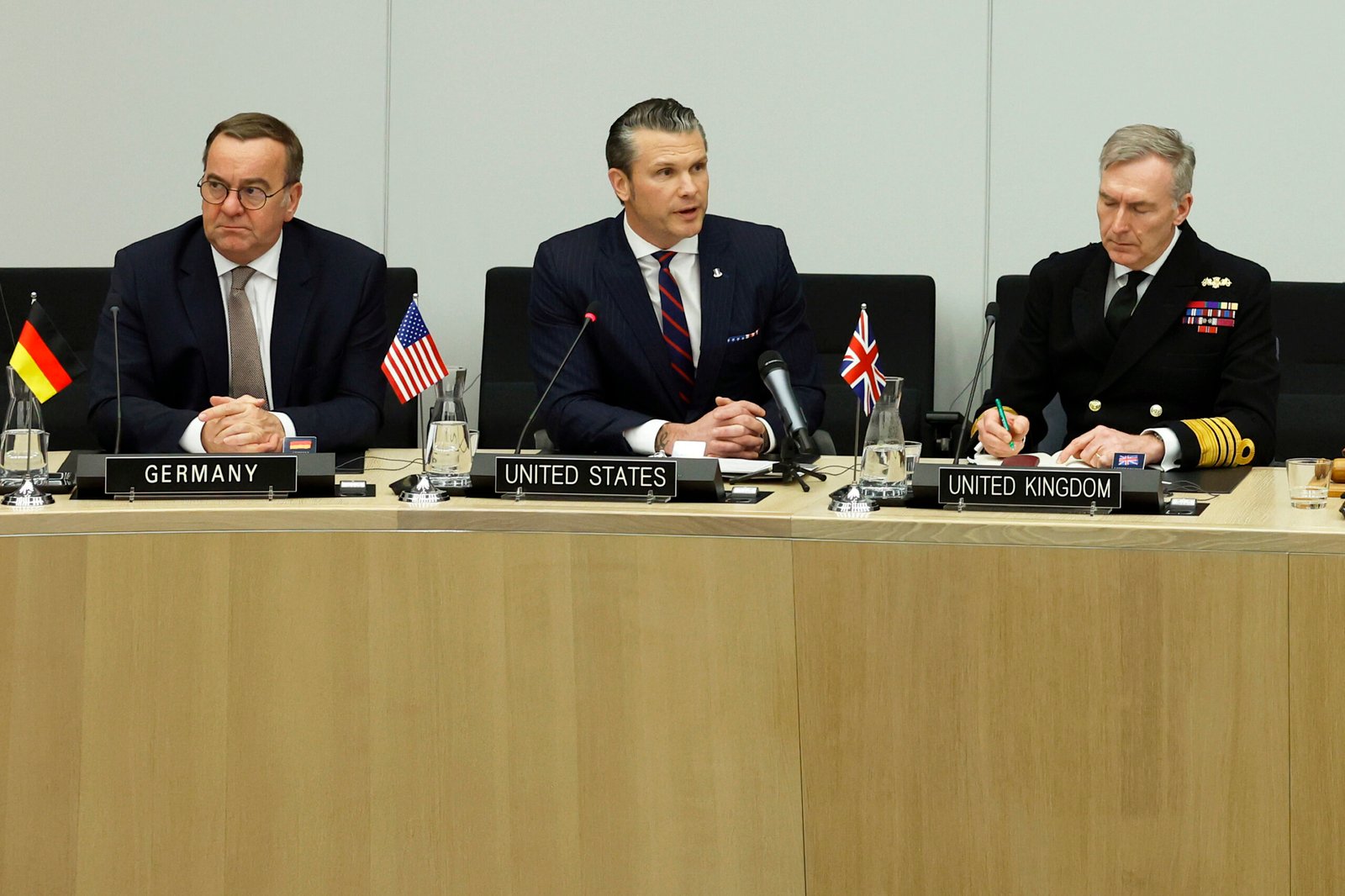The Space Development Agency is launching a study to look at how its proliferated satellite constellation could support the Trump administration’s proposal for a homeland missile defense shield.
In late January, President Donald Trump issued an executive order calling on the Defense Department to establish an “Iron Dome for America.” Though its name is a reference to Israel’s Iron Dome, the system would be designed to counter a range of advanced missile threats, including hypersonic weapons, cruise missile and drones.
The multilayered architecture would feature several space-based elements that build on existing capabilities like the Missile Defense Agency’s Hypersonic and Ballistic Tracking Space Sensor program and the Space Development Agency’s Proliferated Warfighter Space Architecture, or PWSA. It also calls for the development of space-based interceptors, reviving a controversial discussion about the technically complex and politically loaded capability.
SDA’s proliferated architecture includes hundreds of missile-warning satellites designed to detect and track threats in orbit. In a notice Wednesday, the agency said it is conducting a study that looks at how its architecture could be expanded as part of the Iron Dome proposal and asks companies to submit technology concept proposals.
“SDA is interested in industry’s perspective on implementing the Iron Dome for America architecture, and is particularly interested in building on and integrating PWSA’s current contributions to global kill chains and missile defense,” SDA said.
The document lists a number of topics the agency plans to study related to Trump’s executive order, including: high-fidelity modeling, simulation and analysis of PWSA’s ability to counter current and emerging threats; accelerating the process to integrate the Missile Defense Agency’s space-sensor technology into the PWSA; bringing on new missile tracking and custody layer technologies; securing SDA’s supply chain; and improving on-orbit sensor data processing and fusion capabilities.
SDA wants proposals submitted by Feb. 28, and notes that its study will directly inform the Defense Department’s plans.
Meanwhile, Senate lawmakers have proposed legislation that would add $10.4 billion to the Missile Defense Agency’s fiscal 2026 budget to fund the new missile shield and another $19.5 billion in fiscal 2025. The bill, introduced by Sens. Kevin Cramer, R-N.D., and Dan Sullivan, R-Alaska, builds on Trump’s proposal and draws on findings from the Pentagon’s 2022 Missile Defense Review, which was signed out by the Biden administration.
In a notice Wednesday, the agency said it is conducting a study that looks at how its architecture could be expanded as part of the Iron Dome order.
The Space Development Agency is launching a study to look at how its proliferated satellite constellation could support the Trump administration’s proposal for a homeland missile defense shield.
In late January, President Donald Trump issued an executive order calling on the Defense Department to establish an “Iron Dome for America.” Though its name is a reference to Israel’s Iron Dome, the system would be designed to counter a range of advanced missile threats, including hypersonic weapons, cruise missile and drones.
The multilayered architecture would feature several space-based elements that build on existing capabilities like the Missile Defense Agency’s Hypersonic and Ballistic Tracking Space Sensor program and the Space Development Agency’s Proliferated Warfighter Space Architecture, or PWSA. It also calls for the development of space-based interceptors, reviving a controversial discussion about the technically complex and politically loaded capability.
SDA’s proliferated architecture includes hundreds of missile-warning satellites designed to detect and track threats in orbit. In a notice Wednesday, the agency said it is conducting a study that looks at how its architecture could be expanded as part of the Iron Dome proposal and asks companies to submit technology concept proposals.
“SDA is interested in industry’s perspective on implementing the Iron Dome for America architecture, and is particularly interested in building on and integrating PWSA’s current contributions to global kill chains and missile defense,” SDA said.
The document lists a number of topics the agency plans to study related to Trump’s executive order, including: high-fidelity modeling, simulation and analysis of PWSA’s ability to counter current and emerging threats; accelerating the process to integrate the Missile Defense Agency’s space-sensor technology into the PWSA; bringing on new missile tracking and custody layer technologies; securing SDA’s supply chain; and improving on-orbit sensor data processing and fusion capabilities.
SDA wants proposals submitted by Feb. 28, and notes that its study will directly inform the Defense Department’s plans.
Meanwhile, Senate lawmakers have proposed legislation that would add $10.4 billion to the Missile Defense Agency’s fiscal 2026 budget to fund the new missile shield and another $19.5 billion in fiscal 2025. The bill, introduced by Sens. Kevin Cramer, R-N.D., and Dan Sullivan, R-Alaska, builds on Trump’s proposal and draws on findings from the Pentagon’s 2022 Missile Defense Review, which was signed out by the Biden administration.
About Courtney Albon
Courtney Albon is C4ISRNET’s space and emerging technology reporter. She has covered the U.S. military since 2012, with a focus on the Air Force and Space Force. She has reported on some of the Defense Department’s most significant acquisition, budget and policy challenges.
Discover more from World Byte News
Subscribe to get the latest posts sent to your email.




